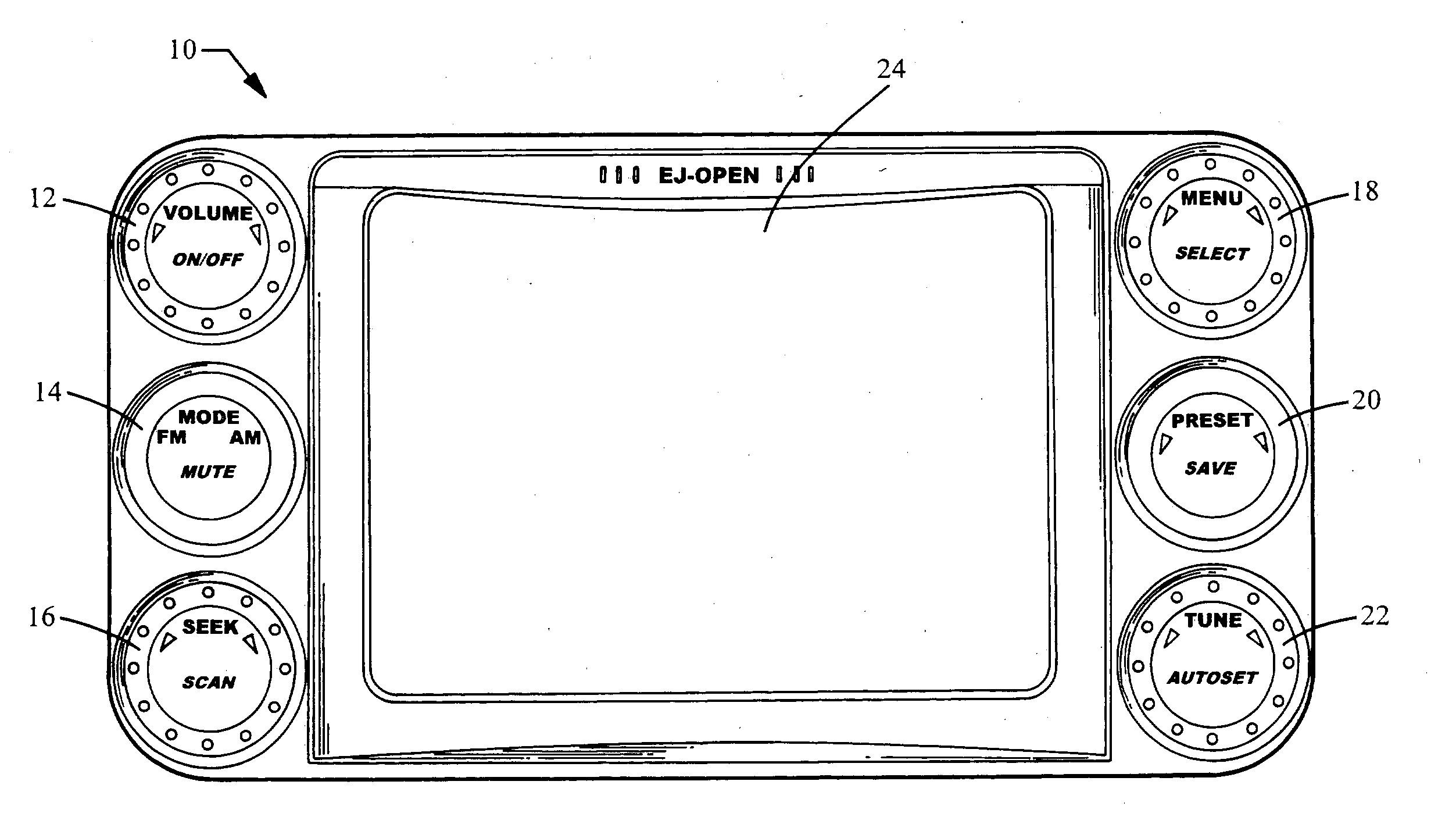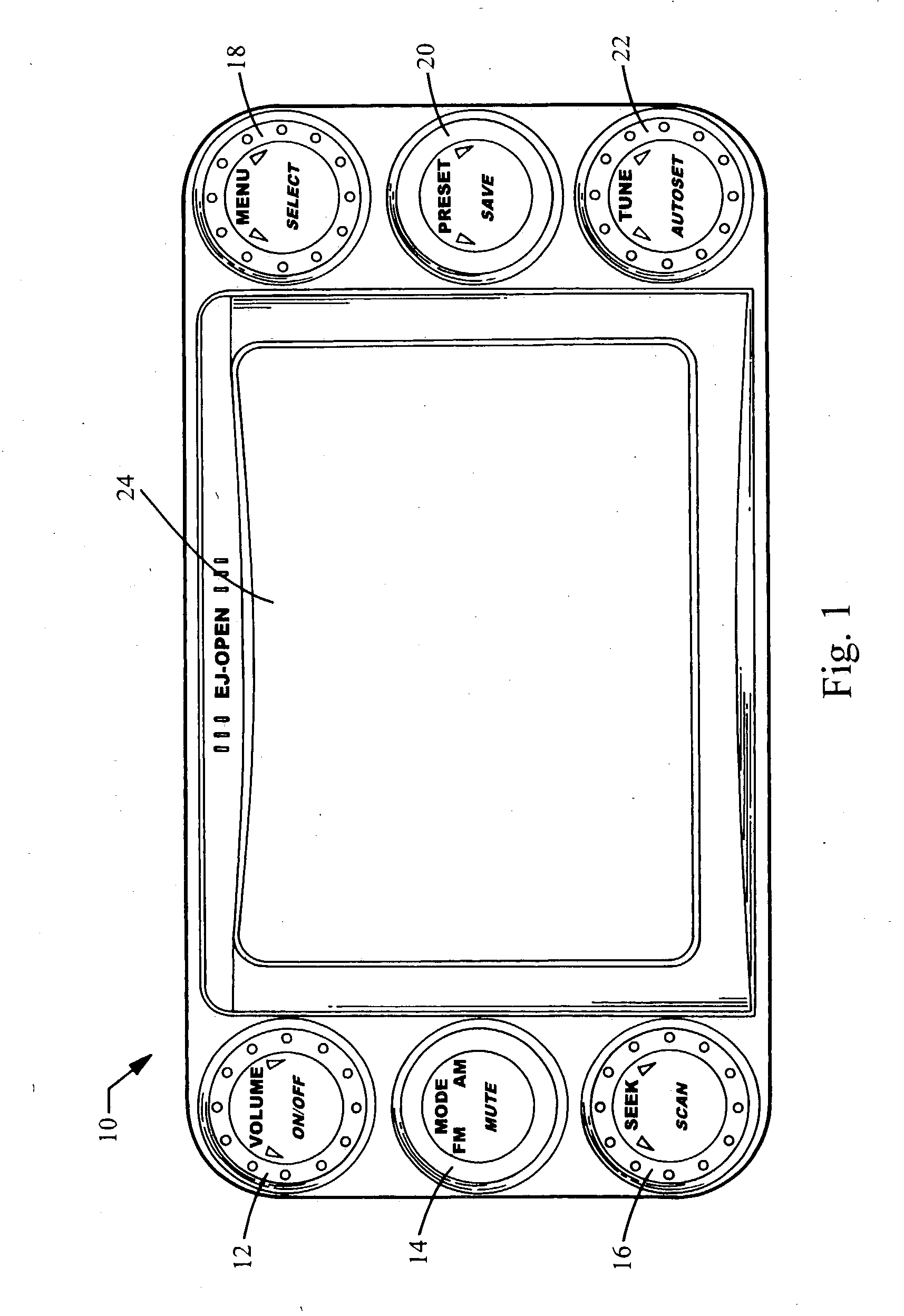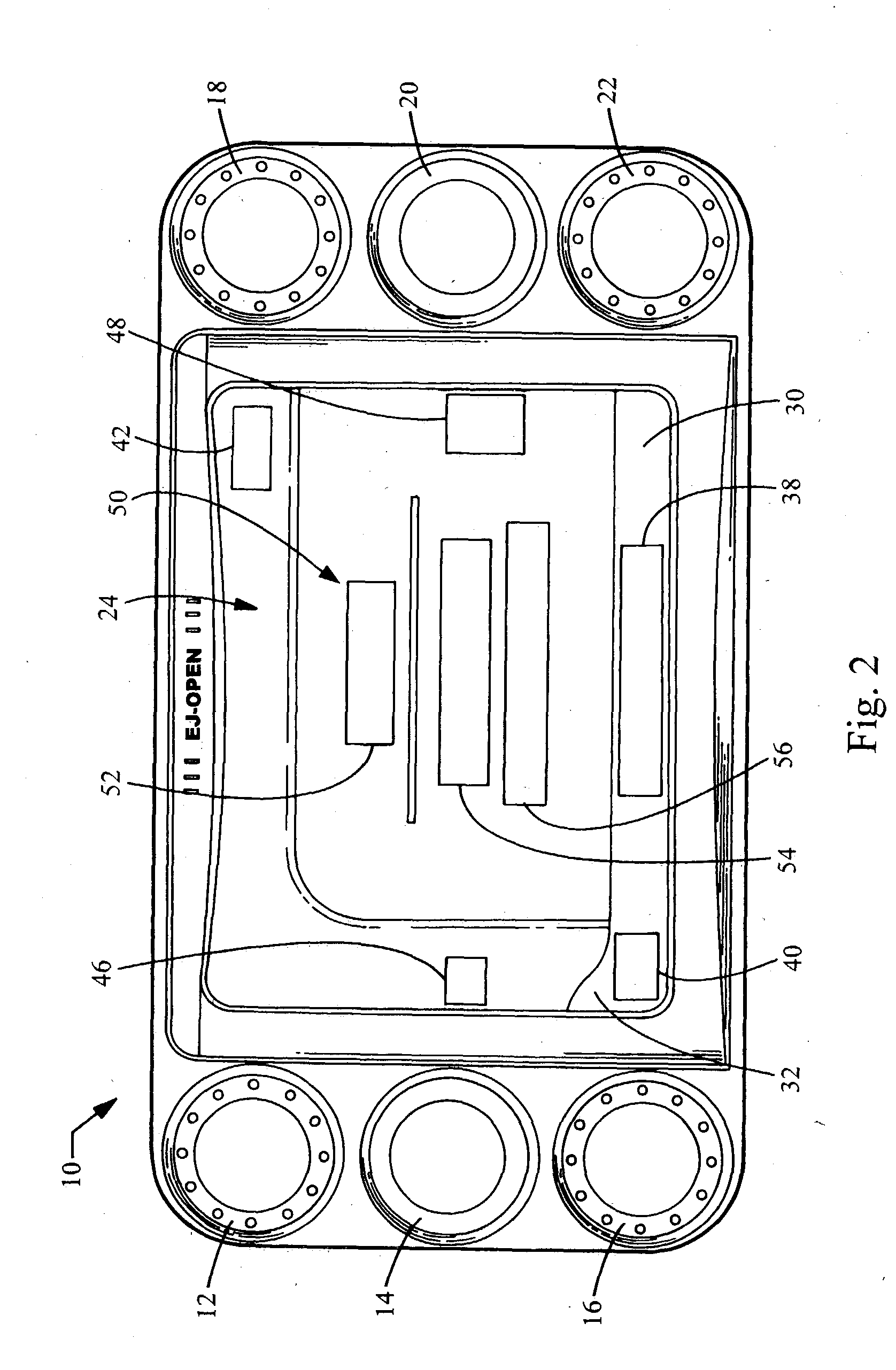Radio human-machine interface using knobs and menu picks
- Summary
- Abstract
- Description
- Claims
- Application Information
AI Technical Summary
Benefits of technology
Problems solved by technology
Method used
Image
Examples
Embodiment Construction
[0017] Referring now to FIG. 1, a human-machine interface embodying the principles of the present invention is illustrated therein and designated at 10. As its primary components, the human-machine interface 10 includes a display 24 and a plurality of knobs six, in the illustrated embodiment designated as knobs 12, 14, 16, 18, 20, and 22.
[0018] The display 24 is preferably an LCD display that provides the user information and options for configuring the use of the audio system. The information provided to the user on the display is organized into a number of menu screens. The functionality for each menu screen is assigned to a particular knob on the human-machine interface 10.
[0019] Each knob 12, 14, 16, 18, 20 and 22 has two selection modes The first selection mode involves rotating or twisting the knob. The second selection mode involves depressing the knob. The functionality for each menu screen is ergonomically associated with the selection modes of a particular knob. The knob...
PUM
 Login to View More
Login to View More Abstract
Description
Claims
Application Information
 Login to View More
Login to View More - R&D
- Intellectual Property
- Life Sciences
- Materials
- Tech Scout
- Unparalleled Data Quality
- Higher Quality Content
- 60% Fewer Hallucinations
Browse by: Latest US Patents, China's latest patents, Technical Efficacy Thesaurus, Application Domain, Technology Topic, Popular Technical Reports.
© 2025 PatSnap. All rights reserved.Legal|Privacy policy|Modern Slavery Act Transparency Statement|Sitemap|About US| Contact US: help@patsnap.com



